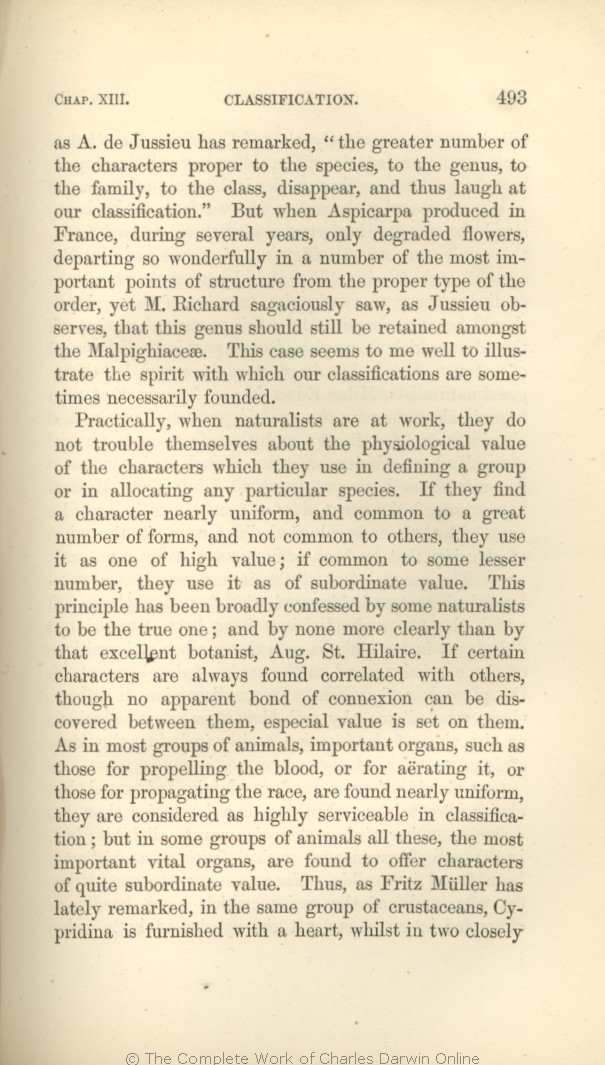as A. de Jussieu has remarked, "the greater number of the characters proper to the species, to the genus, to the family, to the class, disappear, and thus laugh at our classification."
But | But 1859 1860 1861 1866 1869 | But 1872 |
| when 1859 1860 1861 1866 1869 | | When 1872 |
| degraded 1859 1860 1861 1866 1869 | | these degraded 1872 |
| seems to me well to 1859 1860 1861 1866 1869 |
| well 1872 |
| illustrate 1859 1860 1861 1866 1869 | | illustrates 1872 |
| with which 1859 1860 1861 1866 | | of 1869 1872 |
| classifications 1859 1860 1861 1866 | | classifications. 1869 1872 |
| are 1859 1860 1861 1866 | are 1869 1872 |
| sometimes 1859 1860 1861 1866 | sometimes 1869 1872 |
| necessarily 1859 1860 1861 1866 | necessarily 1869 1872 |
| founded. 1859 1860 1861 1866 | founded. 1869 1872 |
|
|
Practically, | Practically, 1866 1869 1872 | | Practically 1859 1860 1861 |
| group 1866 1869 1872 | | group, 1859 1860 1861 |
| certain 1859 1860 1861 1866 1869 | | several trifling 1872 |
| correlated with others, 1859 1860 1861 1866 1869 |
| in combination, 1872 |
| connexion 1859 1860 1861 1866 | | connection 1869 1872 |
| aërating 1866 1869 | | aërating 1859 1860 1861 | | aerating 1872 |
| of animals 1859 1860 1861 1866 1869 | of animals 1872 |
| Müller 1866 1869 | | Müller 1872 |
|









